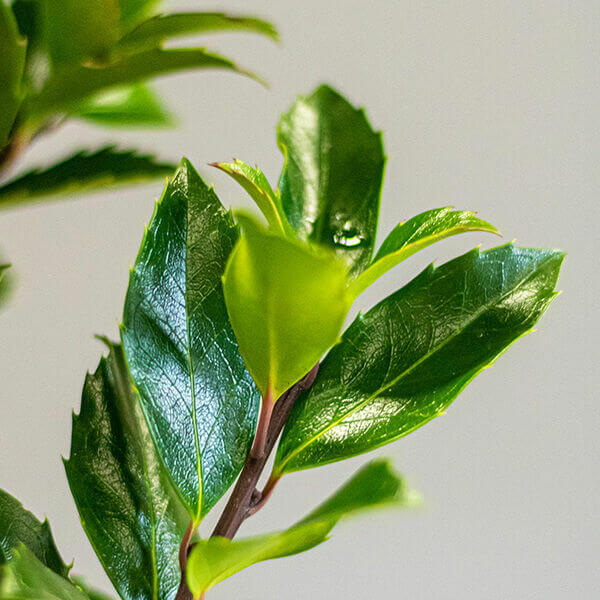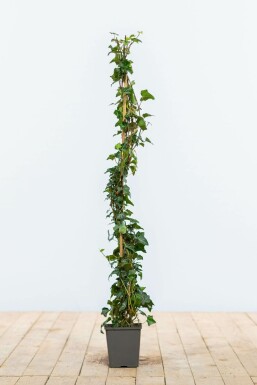Hedge Plants For Ornamental Borders
Hedge Plants For Ornamental Borders
Blog Article
Hedging Plants For Wildlife Friendly Gardens
Enhance your garden's appeal with lush hedge ranges such as Yew (Taxus), Thuja, Laurel, Photinia, and Bamboo, celebrated for their structural integrity and ecological benefits.
Yew and Thuja supply evergreen protection and winter strength, while Laurel provides quick growth and broad, fragrant leaves.
Photinia includes seasonal charm with its dynamic red foliage, and Bamboo provides a low-maintenance, tranquil ambiance.
These hedges enhance air quality, reduce sound, and develop tranquil, private spaces.
Appropriate planting, spacing, and upkeep ensure vigorous development and environmental consistency.
Explore how these lush ranges can raise your garden's beauty and well-being.
Key Takeaways
Change Your Garden With Lush Hedge Varieties
- Select Yew for its dense, evergreen growth and exceptional durability.
- Opt for Laurel for its fast growth and broad leaves, ensuring quick privacy.
- Select Photinia for its lively seasonal foliage, which turns a striking dark red.
- Make use of Bamboo for a low-maintenance, winter-hardy hedge with visual appeal.
- Area plants 2-3 per meter and prune frequently for optimum development and health.
Popular Hedge Plants
When changing a garden with rich hedge ranges, it's important to think about popular hedge plants such as Yew, Thuja, Laurel, and Photinia due to their special characteristics and benefits.
Yew (Taxus) is highly respected for its longevity and thick, green growth, making it a prime option for withstanding landscapes.
Thuja is noted for its evergreen foliage and robust winter durability.
Photinia includes seasonal vibrancy with red leaves that darken gradually, developing vibrant visual appeal.
Laurel provides fast growth and fragrant, broad leaves, ideal for fast personal privacy.
In Addition, Bamboo is an exceptional option for atmosphere, providing a low-maintenance, winter-hardy option that enhances the garden's aesthetic with its elegant, swaying walking canes.
These choices accommodate a variety of horticultural needs and choices.
Advantages of Garden Hedges
Garden hedges provide a wide range of benefits, making them an important addition to any landscape. These natural barriers are economical to execute and provide substantial wind security, enhancing air blood circulation and adding to noise decrease. The dense foliage of hedges like Thuja and Beech ensures personal privacy by blocking visibility, developing a peaceful and secluded environment.
Hedges likewise play an essential role in microclimate policy, providing a steady environment that promotes plant development and lessens temperature variations. Their elaborate leaf structures filter toxins, improving air quality and adding to a much healthier garden ecosystem.
Furthermore, hedges master sound decrease, taking in and deflecting acoustic waves to lower ambient noise levels. This double performance of offering both acoustic and visual personal privacy boosts the general harmony and aesthetic appeal of any garden.
Planting and Maintenance Tips
For an effective hedge, meticulous preparation of the planting area is vital. Ensure the soil has appropriate pH and drain to support strong root development.
Area the plants appropriately for the selected types. Water the hedge frequently during its preliminary growth phase, changing as required with seasonal changes.
Carry out a systematic insect control and illness avoidance method, using organic or chemical treatments when essential. Regularly inspect for aphids, mites, and fungal infections.
Apply mulch to keep wetness and reduce weeds. Seasonal pruning promotes thick growth and air circulation, important for plant health.
Following these guidelines will assist you cultivate a dynamic, properly maintained hedge that enhances the charm of your garden.
Spacing and Cutting Standards
Spacing and Cutting Standards
Correct spacing and cutting are vital for cultivating healthy, aesthetically appealing hedges. Appropriate spacing makes sure each plant gets enough nutrients, light, and air flow.
Follow these standards for ideal hedge upkeep:
- Spacing: Position hedge plants 2-3 plants per meter to encourage robust growth.
- Pruning Techniques: Regular pruning is essential for maintaining preferred hedge height and shape. Cut brand-new development in summer and cut back older wood throughout winter season.
- Seasonal Care: Change trimming techniques and schedules according to seasonal requirements to ensure plant health.
- Hedge Height: Regularly monitor and cut to keep the preferred hedge height and achieve uniform visual appeals.
Complying with these actions will ensure your hedge grows, boosting both the appeal and functionality of your garden.
Choosing the Right Hedge
Picking the Right Hedge
Choosing the appropriate hedge includes assessing elements such as fully grown height, foliage density, and ecological strength. Effective hedge plant selection requires comprehending each species' development qualities and site-specific versatility.
For instance, Yew (Taxus) uses exceptional longevity and dense development, while Thuja is significant for its winter season resilience. Furthermore, considering upkeep requirements is crucial; fast-growing types like Laurel or Privet demand routine trimming, whereas low-maintenance alternatives like Bamboo or Ivy might be more effective for those seeking very little maintenance.
Environmental aspects such as soil type, light availability, and wetness conditions ought to likewise guide the choice procedure. This cautious technique ensures the selected hedges will flourish, supplying both aesthetic and functional benefits to the garden landscape.
Shipment and Planting Recommendations
To guarantee your hedge plants flourish, they ought to be provided by specialized couriers and planted immediately upon arrival.
Follow these necessary steps for successful planting:
- Soil Preparation: Improve the soil with organic matter to enhance drain and nutrient material.
- Planting Depth: Create a trench twice the width and equal to the depth of the root ball.
- Watering Methods: Water completely after planting, keeping the soil regularly moist but not saturated.
- Mulching: Use a layer of mulch to maintain wetness and reduce weeds.
Customer Support and Service
Given the vital role of timely assistance in horticultural pursuits, our client assistance group is readily available 6 days a week through telephone, e-mail, and social networks to use expert advice and promptly deal with any issues. Their devotion to quick reaction times makes sure consumer complete satisfaction by dealing with inquiries connected to plant health, ideal planting techniques, and maintenance schedules.

Accessibility
Within 48 hours
This thorough support group, reinforced by an outstanding 9.3/ 10 customer rating, highlights our commitment to enhancing the gardening experience for each customer.
Regularly Asked Concerns
How Long Does It Take for Hedge Plants to Establish?
Hedge plants generally require one to three years to become fully established, with the exact duration varying by species and growing conditions.
Efficient care during this vital duration is vital for robust development. Consistent watering, watchful weed control, and appropriate fertilizer application here are pivotal in promoting strong root development.
For instance, fast-growing types like Laurel might establish quicker, while slower-growing varieties such as Yew might take longer. Thorough upkeep speeds up the establishment procedure, resulting in healthy and thick hedges.
What Are the Finest Hedge Plants for Privacy?
The question of the best hedge plants for personal privacy includes assessing evergreen and deciduous choices.
Evergreen hedges like Thuja, Laurel, and Cypress offer year-round coverage, guaranteeing continuous privacy.
On the other hand, deciduous hedges such as Beech provide seasonal privacy, shedding leaves in colder months.
Secret maintenance tips for personal privacy hedges include routine cutting, fertilizing in spring, and appropriate spacing-- generally 2 to 3 plants per meter.
Additionally, constant watering and persistent weed elimination are important for promoting healthy, dense development.
Can Hedge Plants Draw In Wildlife to My Garden?
Yes, hedge plants can bring in wildlife to your garden by providing necessary advantages like shelter, food, and nesting sites, therefore improving regional biodiversity. For circumstances, yew, holly, and laurel are excellent for bring in birds, while ivy supports a variety of bugs.
Nevertheless, it's important to note that there are some drawbacks, such as increased upkeep to handle insects and routine upkeep. Thoroughly selecting and preserving hedge ranges can help stabilize these drawbacks and benefits, eventually fostering a sustainable and lively ecosystem in your garden.
Exist Any Blooming Hedge Plants Available?
Yes, there are flowering hedge plants available that can improve the appeal of your garden.
For example, Elaeagnus, also understood as Olive Willow, produces aromatic white flowers in the fall, adding a touch of beauty.
Photinia, another popular option, showcases lively red leaves that mature into a rich green, producing a vibrant visual result throughout the seasons.
To make sure these plants thrive, it's vital to practice correct pruning strategies and seasonal maintenance, such as trimming new development in the summer season and cutting down in the winter season.
These measures will help maintain the health and aesthetic appeal of your blooming hedges.
How Do I Prevent Pests in My Hedge Plants?
To prevent pests in hedge plants, employ natural insect control techniques and keep correct hedge care. Present beneficial insects like ladybugs, which prey on harmful pests, to create a balanced ecosystem.
Regularly inspect your hedges for indications of invasion and immediately get rid of any afflicted parts to avoid the spread. Guarantee the health of your hedges by using balanced fertilizers and providing adequate water.
Use mulching to retain soil moisture and correct spacing to lower plant tension and promote robust growth. These practices collectively help in minimizing bug problems and preserving a healthy hedge.
Conclusion
In essence, choosing the right hedge ranges such as Yew, Thuja, and Laurel can transform any garden into a peaceful haven. These plants supply year-round greenery, enhance visual appeal, and offer practical advantages like noise reduction and wind defense.
Appropriate planting techniques, precise spacing, consistent watering, and seasonal trimming are essential for ideal growth.
Dependable shipment services and professional customer assistance ensure a smooth experience from purchase to planting, making it simpler than ever to raise your outdoor space.
Garden hedges provide a wide range of benefits, making them an important addition to any landscape. These natural barriers are affordable to carry out and offer significant wind security, enhancing air flow and contributing to noise decrease. The dense foliage of hedges like Thuja and Beech makes sure privacy by blocking exposure, developing a peaceful and remote environment.

Pruning Techniques: Regular pruning is essential for keeping preferred hedge height and shape. Trim brand-new development in summertime and cut back older wood during winter season.
Report this page